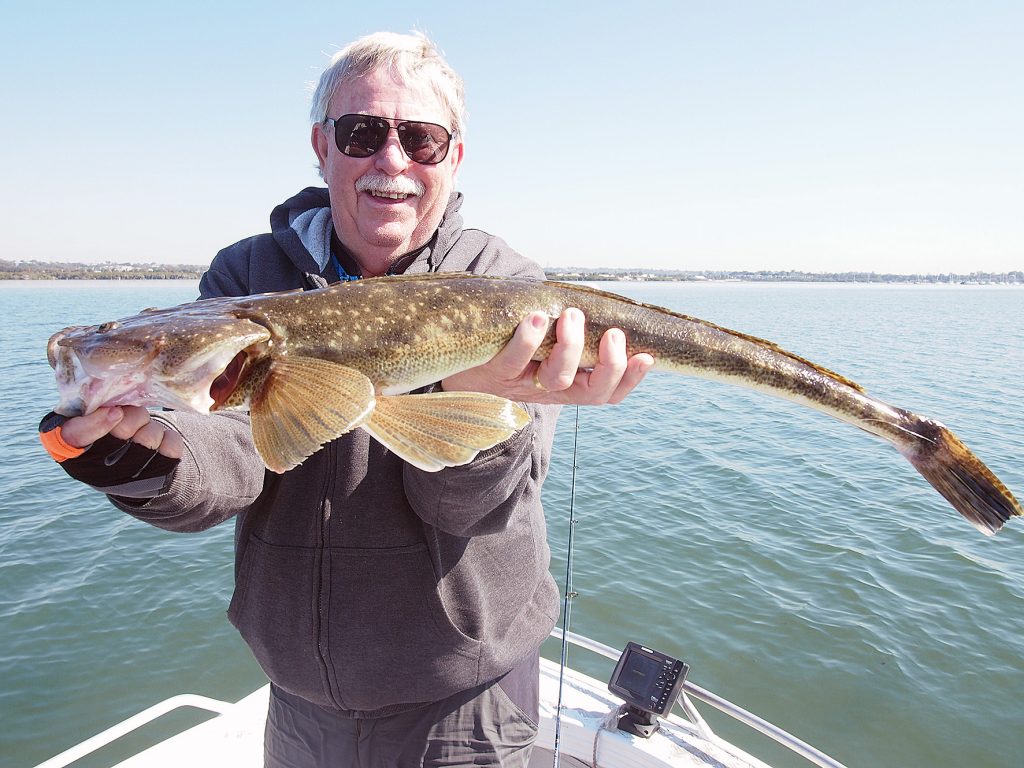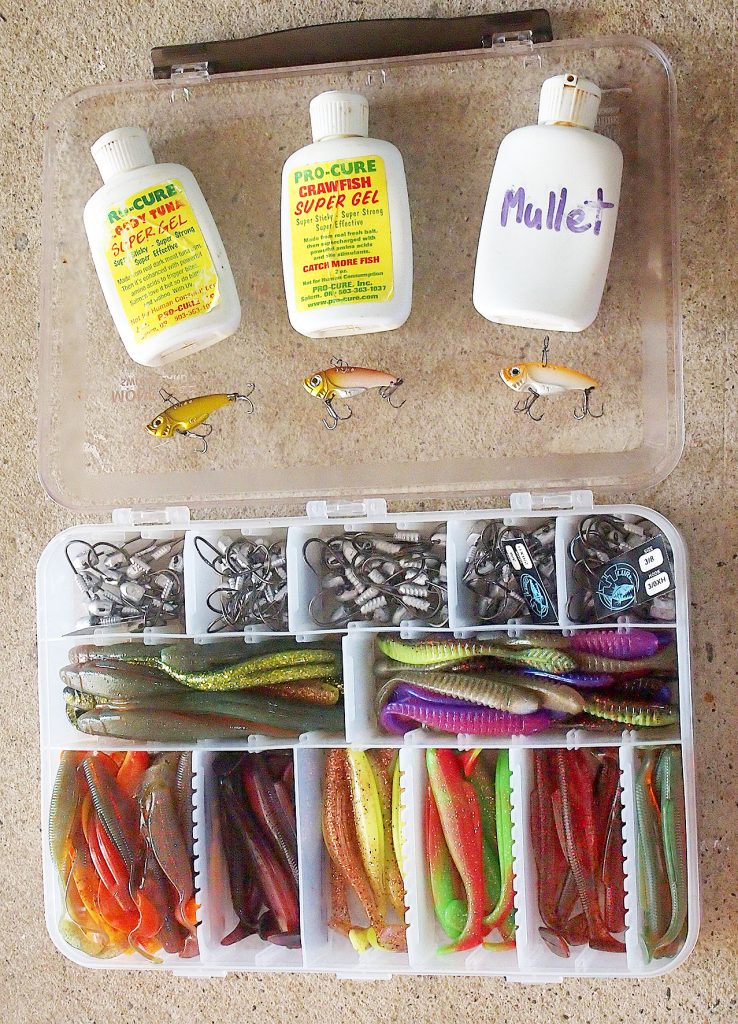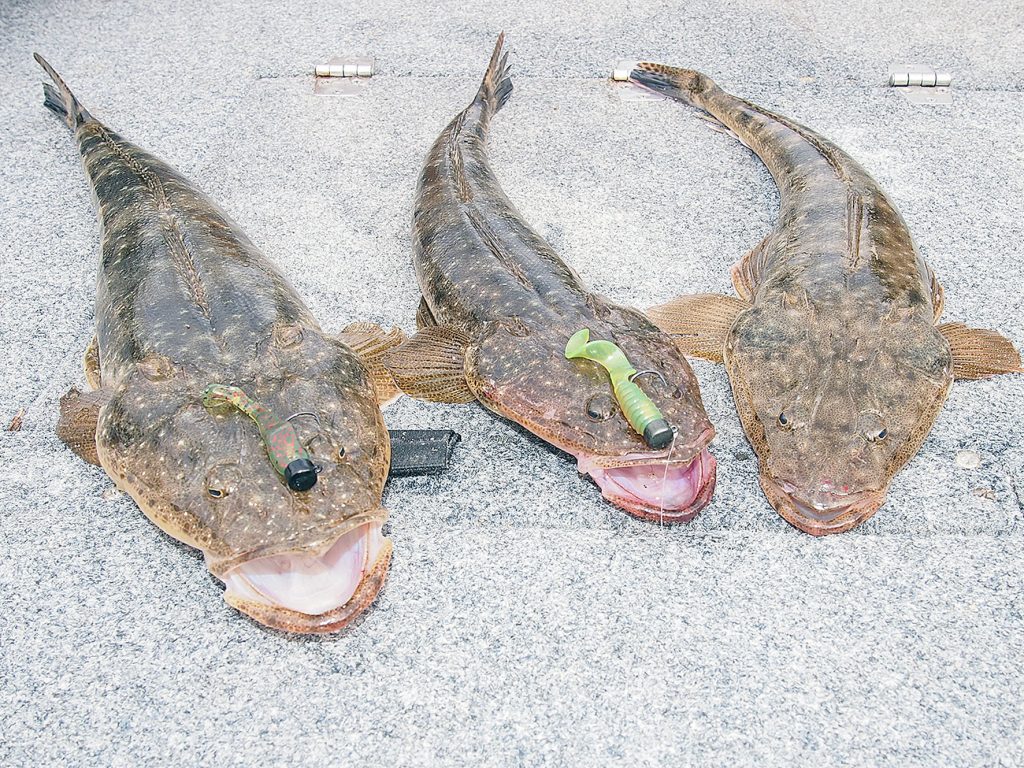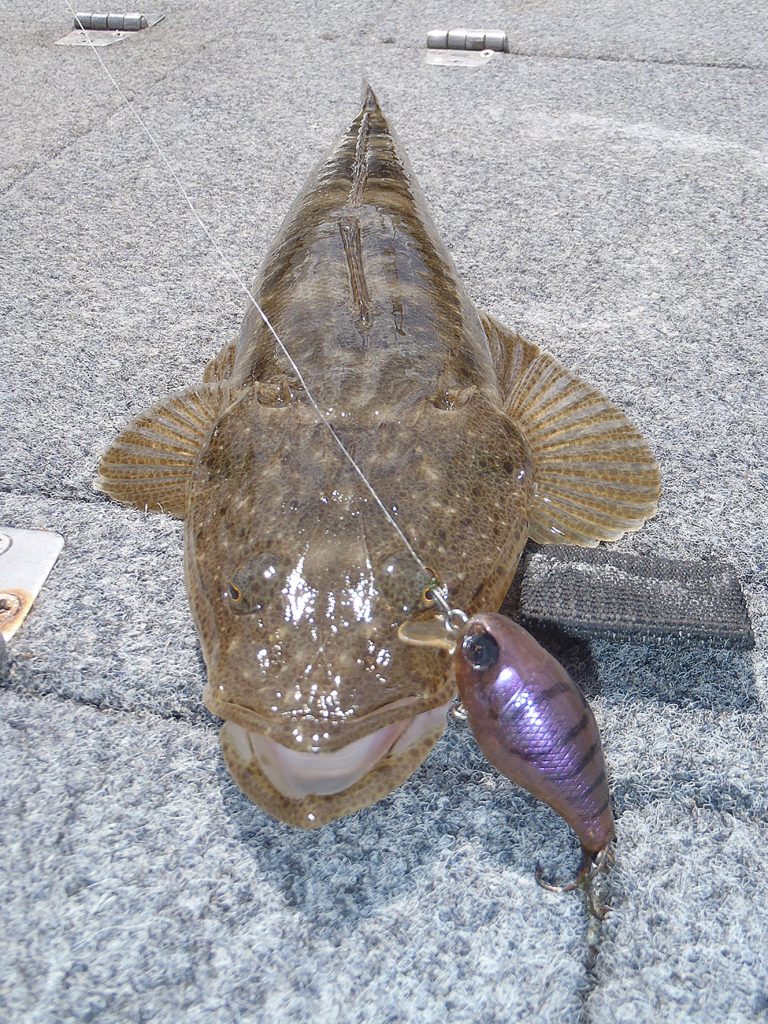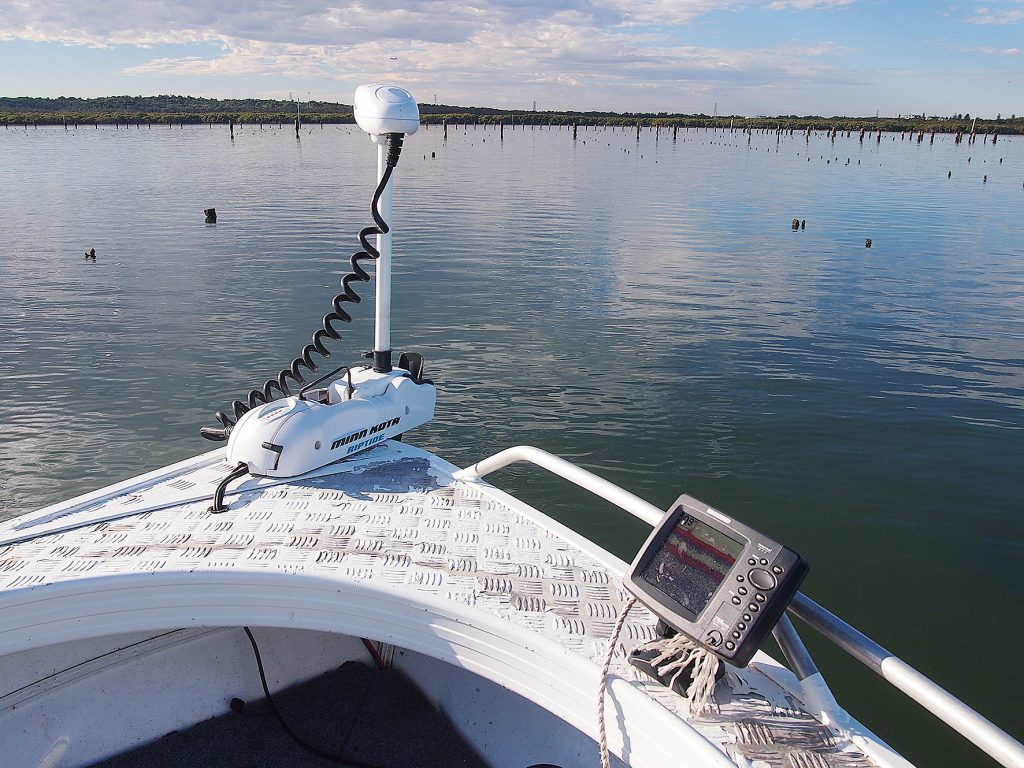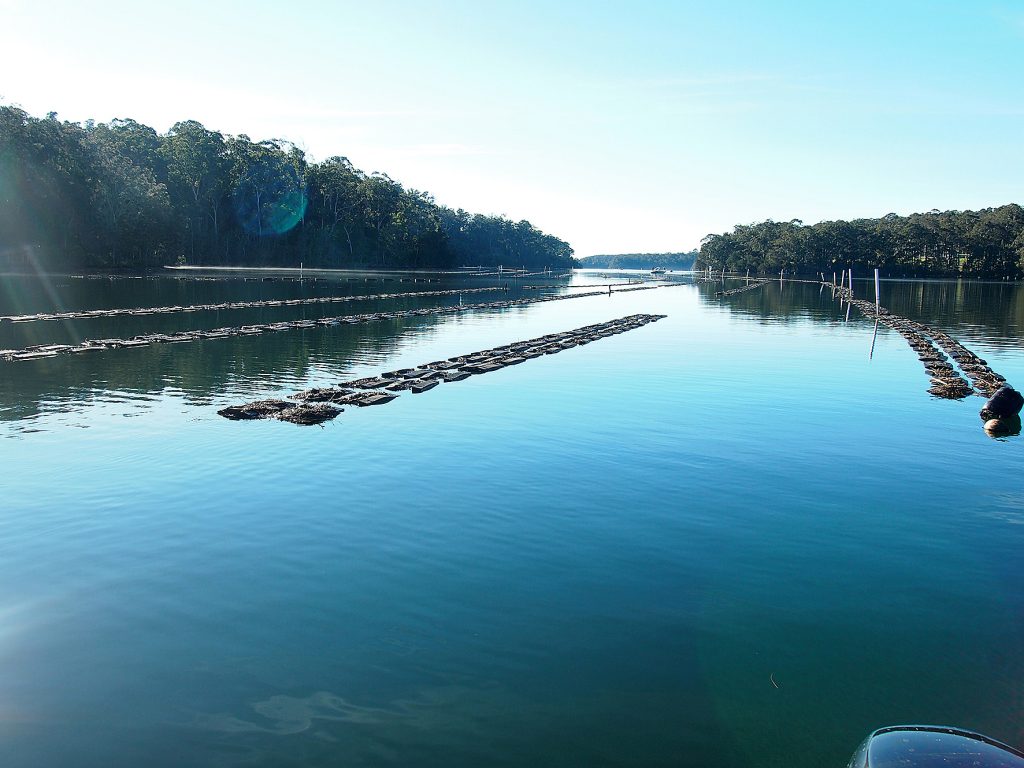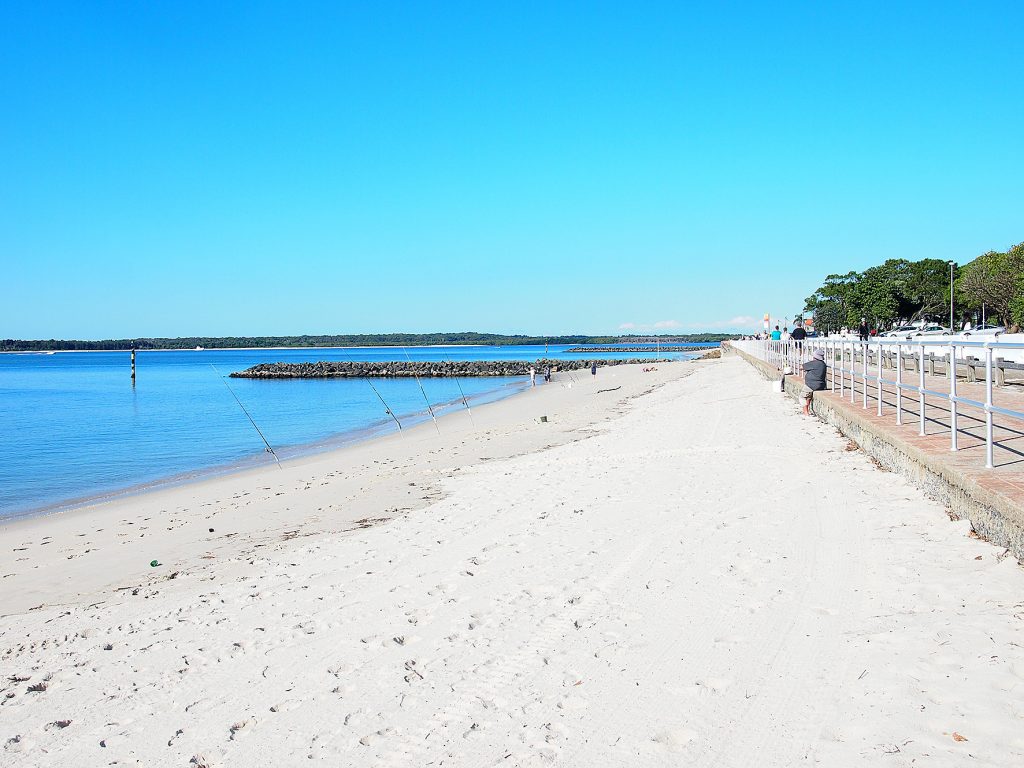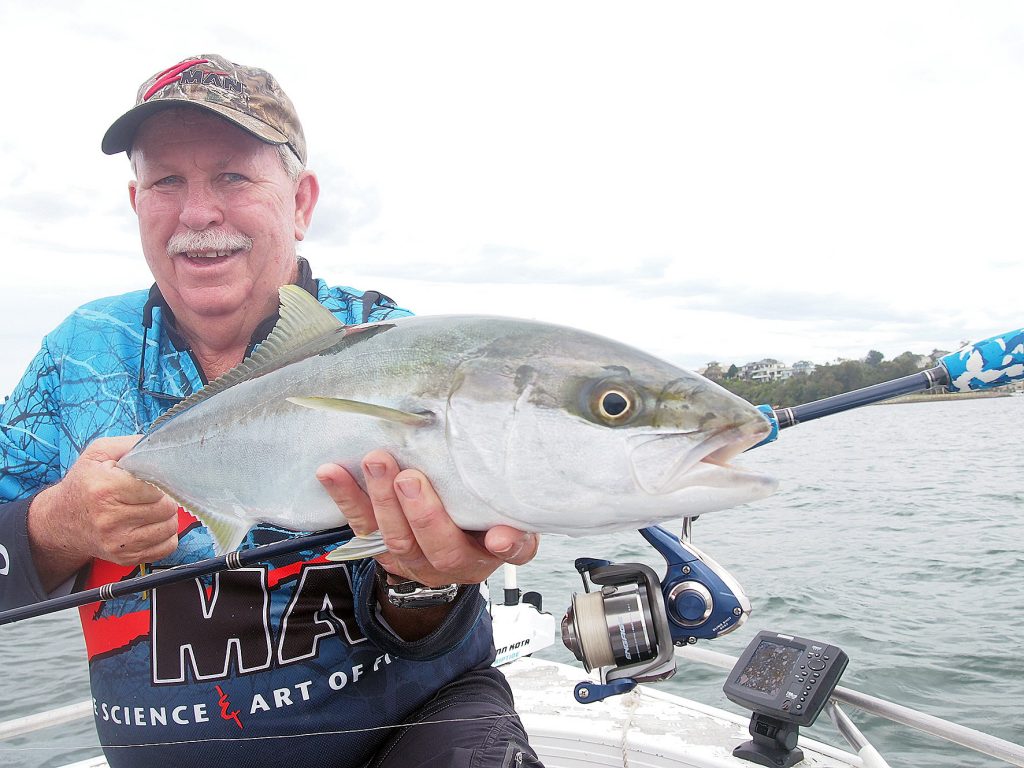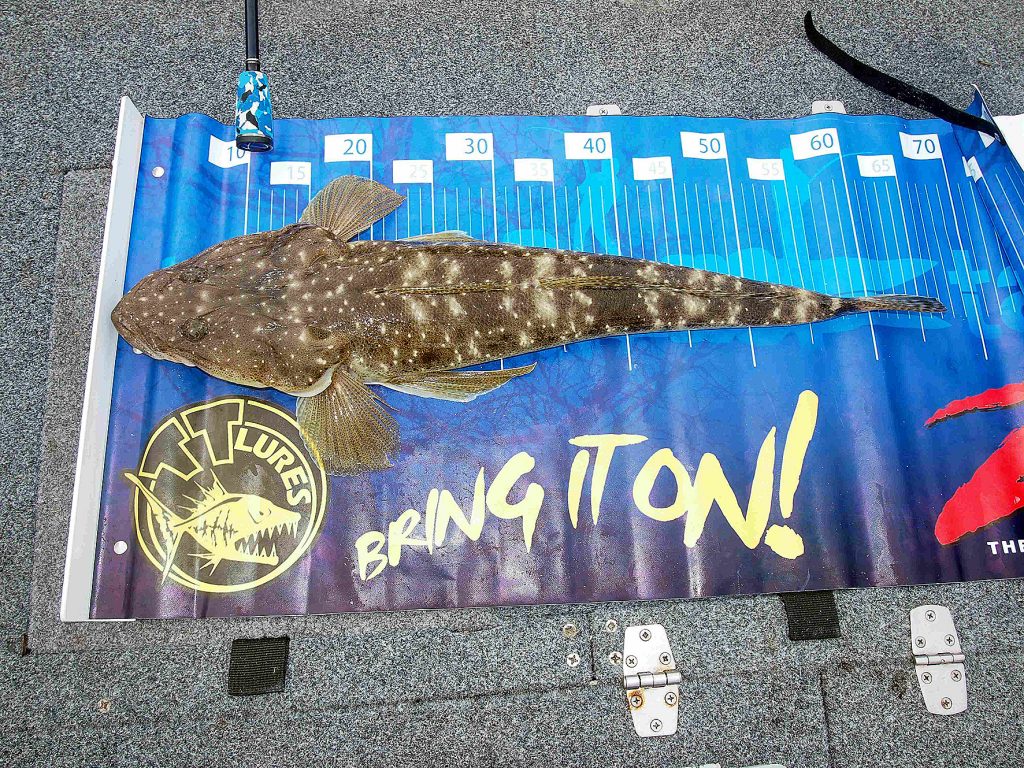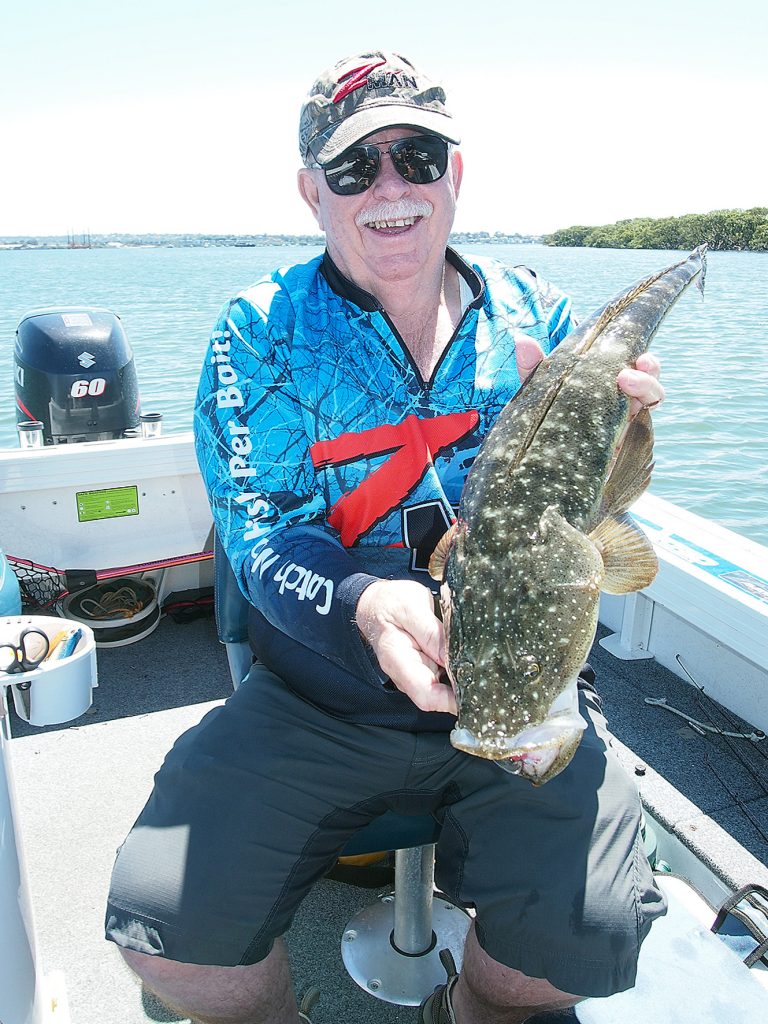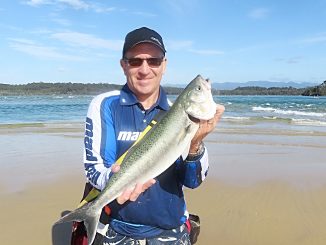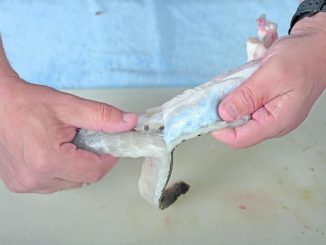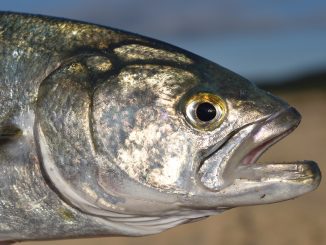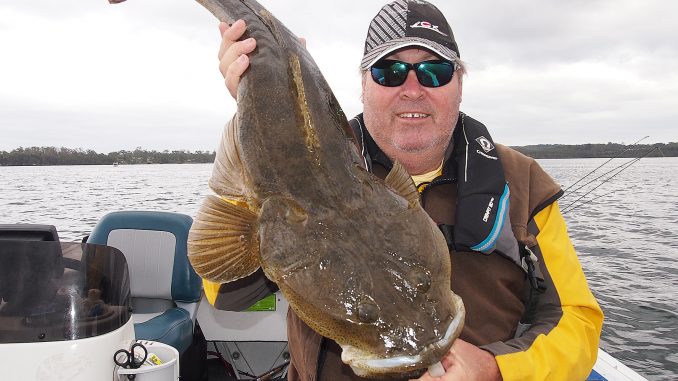
by Gary Brown •
In my early years dusky flathead were the main fish species that I used to catch when fishing with my dad drifting the Georges and Port Hacking rivers.
It was just a matter of rigging up a handline with a large sinker above a match stick on a handline and then putting on a strip of mullet onto a long-shank hook that was about a foot away from the sinker. Either the cork or a Coke bottle was placed on the floor of the boat and when the dusky sucked in the bait and the bottle or cork started to bounce around everywhere, you would grab the 20lb line and start pulling away.
How things have changed for me since those early days.
Nowadays I mostly target dusky flathead with either soft plastics, blades or live baits. Sure, there are times when I catch them while fishing for other fish species like bream, whiting, trevally and mulloway, but I sure do like my lure fishing and so does my wife, as I come back home much cleaner.
Dusky flathead are not all that hard to catch once you have worked out what type of habitat they live in, the types of baits they prefer and a few different techniques to use.
Distribution
The biggest by far of the flathead family is the dusky flathead, also known as the mud, estuary, dusky river and black flathead. Dusky flathead usually spawn during the warmer months of September to March in northern tropical waters, November to February in Moreton Bay, and January to March in NSW and Victoria. Eggs and larvae of the dusky flathead are dispersed along the coast by tidal and current movements.
They have been reported to reach a maximum weight of 13kg and 1.2m in length, and are easily distinguished by the conspicuous black spot on the trailing edge of the upper lobe of their caudal fin.
The longest that I have seen in the flesh was 95cm and was caught by Dave Fletcher on the Gold Coast on a Berkley 6” grub pinned on a 3/4oz, 5/0 TTs jighead.
The flathead shape is unmistakable, with its flat head, long tapering body, spines on either side of its cheeks and also in the front of the first dorsal fin, fawn to black on top and white underbelly. The tailfin features a characteristic dark spot in the top end corner and a patch of blue on the lower half.
Where to find Flathead
Duskies are usually found over mud, silt, gravel, along the edges of weed or rock walls while facing into the current, and when the unsuspecting small fish, prawn or crab passes by, it will use its brilliant turn of speed in a short distance to grab hold of its prey.
You will also find them laying in-wait along the edges of mangroves, breakwalls, retaining walls, drop-offs, the edges of rock bars, gravel patches, mussel and cockle beds, sand and mud flats, the edges of deep holes, on the edges of fast moving currents, in between and underneath oyster racks, at the bottom of marker buoys and poles, at the base of a bridge pylon and around the edges of floating pontoons.
What bait should you use?
In my experience, dusky flathead will nail just about any bait that is put near them. The trick is to determine which one they would prefer at the time. Over the years, I have caught them on what I would class as weird baits for flathead. Baits like the skin off a yellowtail or slimy mackerel, cunje, limpets, earthworms and freshwater yabbies have caught me flathead before.
When it comes to targeting dusky flathead with bait, live baits win hands down over dead baits. Then comes fresh whole baits, followed by fresh strips of bait and lastly, old smelly bait.
Some of the flathead I have caught over the years and have taken home for a feed have had everything from mullet, yellowtail, squid, whitebait, worms, yabbies, garfish, sweep, mados, trevally, crabs, oysters, mussels, cockles and one even had a small seahorse in it.
I have found that the trick to catching duskies that are of a good edible size (40-55cm) is to have a live bait that is about 4-6cm in length. This is where poddy mullet are ideal. On the other hand, if you can catch yellowtail that are around 7-8cm in length, they are deadly when it comes to catching larger duskies.
In NSW, the term ‘poddy’ refers to the juvenile of a particular species, and a poddy mullet is a juvenile sea mullet. It can be very difficult to identify the various species of mullet, particularly when they are juveniles. As a result, anglers may take any species of mullet in NSW for use as live bait only. Provided they are less than 15cm and the total number does not exceed 20 per person, this is perfectly legal.
At times, catching poddy mullet can be very frustrating, but so much fun, especially for the kids. You don’t even need a rod. A handline, a small no. 12-14 long shanked hook and some white bread will do the job. As for berley, you could use white bread, but this will also attract the seagulls. Because of this, I use bread crumbs for berley and small pieces of white bread. The only problem is that you can only catch one at a time, unless you try using a multi hook bait rig. You could also catch yellowtail, whitebait and hardiheads this way.
For a quicker way of getting numbers of poddy mullet you should try using a poddy trap. This can come in the form of an Alvey clear plastic cylinder, a plastic bottle with a hole cut in it or a clear glass bowl covered with fly wire.
If you find that trying to catch your own live poddies or yellowtail is too much work, you could try using strips of mullet, tuna, bonito, slimy mackerel, pilchards, yellowtail, pike or garfish.
How to rig them live
There are three ways that I rig my poddy mullet or yellowtail. When you are drifting or fishing in fast current while at anchor, I will put the hook through the nose or bottom jaw to allow to water to flow through the fish’s gills, keeping it alive. Sometimes I have had a strike only to come back with part of the poddy. When this happens, I will usually use a two-hook rig and put a stinger on the top of the fish near the tail.
If the area you are going to fish has a snaggy bottom or where there is weed, you can put the hook through the shoulder of the fish and suspend it under a float.
The last way is to pin the hook through the tail wrist when you are casting the live bait into a snag, creek mouth or along the edge of a small drop-off. This allows the bait to swim off into the snag or to the edge of the drop-off to seek protection, but what it doesn’t realize is that there is usually a flathead lying in wait.
How to rig whole dead baits
What you need to remember is that dusky flathead will eat anything, and more importantly you also have to remember that if you are using a dead bait and it has a NSW Fisheries size limit, you must adhere to the rules.
Whole tailor and whiting also make great dead baits. Just remember that tailor have to be at least 30cm and sand whiting are 27cm. You could try using red spot whiting, trumpeter, squid, silver biddies, garfish, cowanyoung and slimy mackerel as whole dead baits.
Before I position the hooks into the dead bait that I am using, I will make sure that I break the vertebrae in the back bone, giving it much more flexibility when rigged. If using a three-hook snooded rig, I will put the top one in its nose, the second just under the dorsal fin and the third just as the tail starts to thicken. This allows the bait to move about freely.
Whole baits can also be rigged successfully on a set of ganged hooks. The main thing to remember is that you should match the size of the hook to the width of the bait. For example, if you are using a whitebait I usually use either two 1/0s or two 2/0s. For blue bait I will increase the number of hooks and not the size, opting for three 1/0s or three 2/0s. On the other hand, if I am using whole WA pilchards, I’ll use three to four hooks and the size could range from 3/0-5/0. For garfish I would increase the number of hooks to suit the length of the bait, remembering to break the vertebrae in the spine to make it more flexible.
There are three main things you need to remember to check when using gangs in a whole bait: all of the hook points must protrude outside the body of the bait, the last hook point must be down near the back of the bait (whether it has been rigged head or tail first), and when rigged the bait must be straight.
Whether it’s a garfish or whole pilchard you need to make sure that the number of hooks and hook sizes suit the length of bait that you are using.
The top hook of the double rig is placed near the top of the bait while allowing enough room to do a double hitch around the pointy end. The bottom hook is placed so that the hook point and barb are protruding out of the skin.
One hook is usually enough when using a squid that has been sliced at the bottom to make it look like tentacles.
When using smaller pieces of strip baits the hook needs to go through the top twice and then line half hitched around the pointy end. The hook is placed so that the hook point and barb are protruding out of the skin towards the bottom of the bait.
Targeting Dusky Flathead with lures
What type of artificial that you decide to use when targeting dusky flathead is going to depend on what you would prefer to use. I like jigging, trolling and surface fishing with soft plastics, hardbodied lures and blades, in no particular order.
Soft plastics
When it comes to what jighead and soft plastic to use when targeting dusky flathead, it can be a bit overwhelming when you are starting off. There are so many on the market nowadays, and some of them are great, while others are not so great.
To keep it simple, they have to have a chemically sharpened point that will stand up to getting snagged a number of times, some kind of a keeper device just below the head of the jig to help hold the soft plastic on the shank of the hook, the wire diameter has to be strong enough so that it doesn’t straighten out, and the shape of the jighead needs to suit the type of soft plastic that you are using.
When it comes to what technique to use when using soft plastics, I am going to keep it simple and give you three that I use either from the shore or out of a boat. The next time you are out on the water, you should give them a go and if they work for you, maybe you will come up with some variations of your own.
I find that whether I single jerk or double jerk the soft plastic off the bottom will depend on the depth of water that I am fishing in. Let’s say that you are fishing over a set of flats where the water is at a constant depth of around a metre. If you were to cast out as far as you could and use the double jerk method, the plastic would rocket off the bottom on the first jerk and after the second jerk it would be near the top of the water.
So, does this really matter in only one metre of water. Height off the bottom? No. For distance the plastic travels horizontally through the water. Definitely! It could move well over 2m from its starting point, causing the plastic to move away from the waiting dusky flathead. Try jerking the plastic with one lift where the rod tip only goes to about 45° to the water’s surface and then allow it to sit for a few seconds before repeating the process. As you get closer to the boat or shore, you won’t be ripping the plastic out of the water and making it rocket back at you.
If you are fishing in water depths of more than a metre and up to around 10m, you may like to try using the double jerk method. In my experience, it doesn’t have to be a very violent double lift – just enough to make the plastic rise off the bottom about a metre. Most of your takes on the soft plastic will be when it is falling back down. Remember that if you are fishing where there is a fair bit of a current running, you may have to either slow down the lift or put on a heavier jighead to compensate.
Another technique that has worked for me over the years is what I call the ‘rip and burn’ method. This is where you cast out as far as you can and allow the plastic to sit on the bottom. Wait for about five seconds and then wind the handle as fast as you can for about five turns. Then stop and allow it to settle on the bottom. Repeat the process until it’s a couple of metres from the rod tip.
With these techniques, it helps to keep the rod at 90° to where you have cast the plastic. This will give you a bit of a cushion when the flathead grabs the plastic and takes off, and it also gives you some flexibility when you need to set the hook.
Slow rolling with a slight twitch is another great technique with soft plastics, especially from off a sand or mud bank and down over a drop-off as the tide is falling. The same can be said for when the tide is just starting to flood onto the sand banks. This technique is the more sedate method that I use, and it also great when fishing parallel to weed beds or rock bars.
Blades
Over the past 10 or so years I have hooked and lost so many flathead on blades while targeting bream that it’s not funny. The lost fish are mainly due to the leader being too light and the flathead taking the blade right down their throat.
Once again, there are so many different shapes and size of blades on the market nowadays that it can become very confusing when it comes time to choose one. When they first came out I started to use the TTs Switchblades and I still do. But I also have a number of other brands that I have tried that work extremely well.
The TTs Switchblade features 3-4 different tow points, giving the angler the ability to adjust the lure’s action to suit the water depth, current and technique being used.
This lure can be hopped or slow-rolled across shallow flats, vertically jigged against steep structure or tea bagged in deep water. As with all blades, they vibrate and shimmy, and they excel in dirty conditions as the blade body gives off just the right shimmy to attract predatory strikes from fish.
When targeting flathead with blades, my collection ranges from 1/2-2oz and my leader size will range from 5-10kg, depending on the size of blade that I am using at the time.
SCENTS
Whether it’s soft plastics, blades or hardbodied lures, they are all great when used by themselves. But there are times when a little bit of scent applied to them makes the fish grab and hold on longer.
I only use it when I am getting takes or hits and the fish are not hooking up, and also when the water is very dirty. So, do you need to put a heap on? Not really! As an example, the first time I smeared scent over the sides of the blade I found that on the retrieve there was so much that the trebles stuck to it, making the blade have no action at all. Then on the other hand, Stuart Hindson got me to put a blob on a blade and cast it out and let it just sit there. It wasn’t long before a fish grabbed hold of the lot and took off with it!
Go crack a flatty!
Well, there you have it. A few, but extremely effective techniques that I have used over the years to target the humble dusky flathead. All I can say when it comes to targeting dusky flathead is that you need to keep it as simple as possible and the fish will come.
Even though I have caught plenty of dusky flathead over the years, I still get so much enjoyment out of taking my kids and now grandkids fishing for flathead while drifting in a boat and watching the world go by.
You too should try it and I am sure that you will also become hooked on catching the humble dusky flathead.

